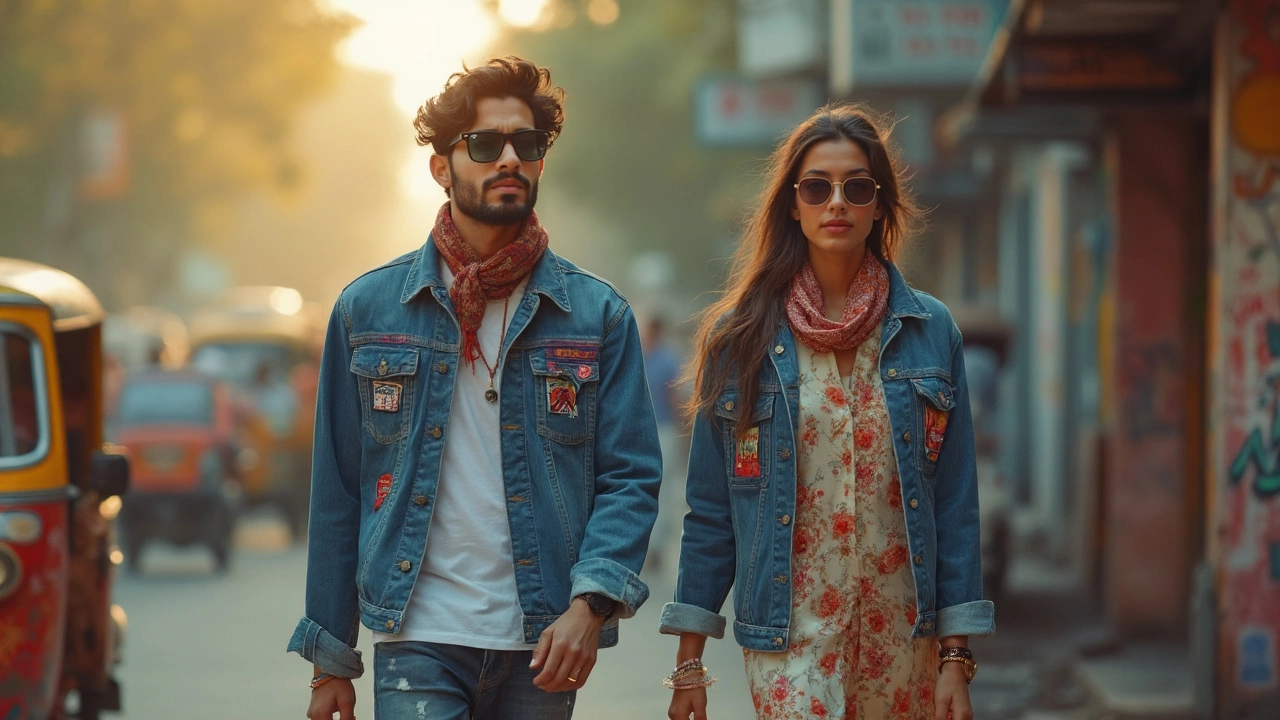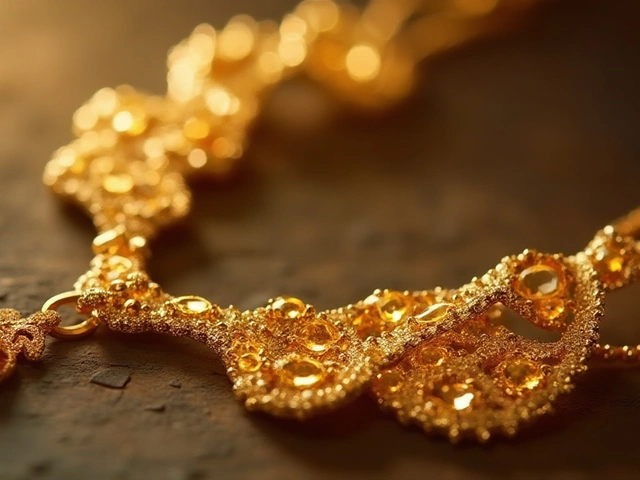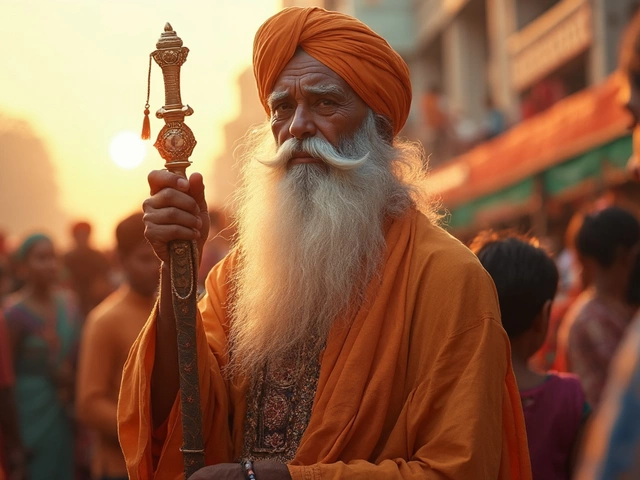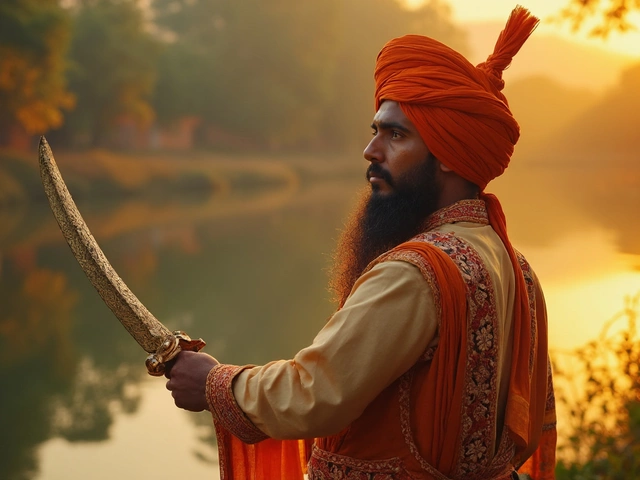Indians don't just follow fashion—they remix it with their own rules. The weather, culture, and even family events force you to think beyond the basics. Skip the black suit and tie for every occasion. You need clothes that can handle crazy humidity, sudden downpours, and still look sharp at a wedding that goes till sunrise.
The right style isn't about having a huge wardrobe; it's about knowing what actually suits you and how to work with what you have. Accessories matter more in India than you think. Tiny tweaks like a well-picked watch or a fuss-free stole can take your whole look from just okay to 'where did you get that?' Comfort, confidence, and a dash of local flavor—get those right, and you’ll fit in anywhere from a swanky Mumbai rooftop to a colorful Holi party in Jaipur.
- What Works (and Doesn’t) in Indian Fashion
- Accessories That Make a Difference
- Indian Climate and Fabric Choices
- Common Style Mistakes to Dodge
What Works (and Doesn’t) in Indian Fashion
If you’re trying to actually stand out (in a good way), you need to play to India's strengths. Here’s the real story: you don’t need to copy what you see on Western runways or Bollywood sets. Indian fashion is all about mixing comfort, smart color choices, and a blend of local and global vibes. If you rock the fashion accessories India scene with even a little confidence, people notice.
Fabric matters more than the brand. Cotton, linen, and light blends save you in summer while silk and wool keep it classy in winter weddings. Don’t mess around with heavy synthetic stuff—especially in sweaty cities. For guys, yes, you can wear jeans, but they actually work best with casual polos or cotton shirts. T-shirts with loud prints or awkward graphics almost always look out of place at a family gathering.
Colors are huge here. Bright, earthy tones (think mustard, maroon, teal, olive) crush it during festivals and casual hangs. Pastels and neutrals are perfect for daytime meetings and brunches. And for anything traditional—kurta-pajamas, Nehru jackets, or a simple Pathani suit—you can't miss. Just keep it clean, well-fitted, and ironed. Ill-fitted kurtas or saggy trousers scream zero effort.
Now, what doesn’t work? Over-layering. The temptation to rock a jacket in 40°C heat is real but trust me, that sweat patch is not stylish. Chunky shoes or boots rarely match with the Indian aesthetic (unless you’re at a fancy winter do in Delhi or Shimla). Wearing Western suits at every event makes you look like you missed the memo. And skip those blingy, over-the-top accessories—unless it’s a wedding and even then, moderation is your friend.
Here's a quick breakdown of what usually flies in Indian fashion circles:
- Well-fitted cotton or linen shirts
- Slim but comfy chinos or jeans for casual outings
- Simple kurtas (short or long) and a tailored Nehru jacket for semi-formal.
- Muted, season-friendly prints (think block prints or Ikat) instead of loud logos
For the fact geeks, a 2023 survey by Myntra showed over 65% of young Indians actually prefer versatile fusion wear (mixing Indian and Western styles) for events, instead of fully traditional or Western-only clothes.
| Dos | Don'ts |
|---|---|
| Breathable fabrics, muted or earthy colors, minimal accessories | Heavy synthetics, too much layering, loud or mismatched prints |
| Fusion wear (smart mix of Indian-Western) | Ill-fitted, creased, or stained clothes |
Bottom line: Practical style wins. Adapt to the season, mind the occasion, and don’t try too hard. If you get the basics right, the details are way easier to nail.
Accessories That Make a Difference
If you want to turn basic outfits into sharp looks in India, it all comes down to accessories. People instantly notice how you style the details, not just your shirt or pants. In fact, a 2023 Indian fashion survey showed that watches and shoes rank as the top two accessories people judge style by.
Let's cut to the essentials. Every guy needs at least one sturdy, good-looking watch. It doesn’t need to be an expensive Swiss piece. Indian brands like Titan and Fastrack nail the sweet spot between price and style. The right watch makes casual look put together and adds polish to ethnic outfits like kurtas or bandhgala jackets. Resist digital sport watches at weddings, though—they rarely look right in formal settings.
Belts are another big one. Indian outfits move between jeans, chinos, and sometimes even a dhoti or kurta combo for fancier days. Go for a neutral, leather belt that works with almost anything. Brown is less harsh than black and pairs well with most Indian shades. Skip the huge flashy buckles—they don't impress anyone except airport metal detectors.
Shoes in India aren’t just about sneakers. Sure, white trainers work in cities, but you also want a pair of simple loafers, classic black lace-ups, and ethnic juttis or mojaris for weddings or festivals. Leather sandals can also work, as long as your feet are sorted—nobody wants to see cracked heels peeking out.
Bags matter, especially if you bounce between work and gym or back-to-back weddings in family season. Opt for a simple canvas tote or a leather messenger bag. Backpacks are fine for college, but less so for office events.
Finally, the secret weapon—pocket squares and stoles. These are seen everywhere from Bollywood events to basic city weddings. A cotton or linen pocket square with a solid color or minimal pattern adds serious character to a suit or blazer. Same deal with stoles; find one in a natural fabric and a color that isn’t neon, sling it on with a kurta, and you’re set.
In any roundup of fashion accessories India leads the way with fusion trends. Think silver bracelets or rings, even basic aviator sunglasses for afternoons when the sun is brutal. The trick is to keep it subtle—one or two accessories at once. Too much and you end up looking like you got lost on your way to a costume party.
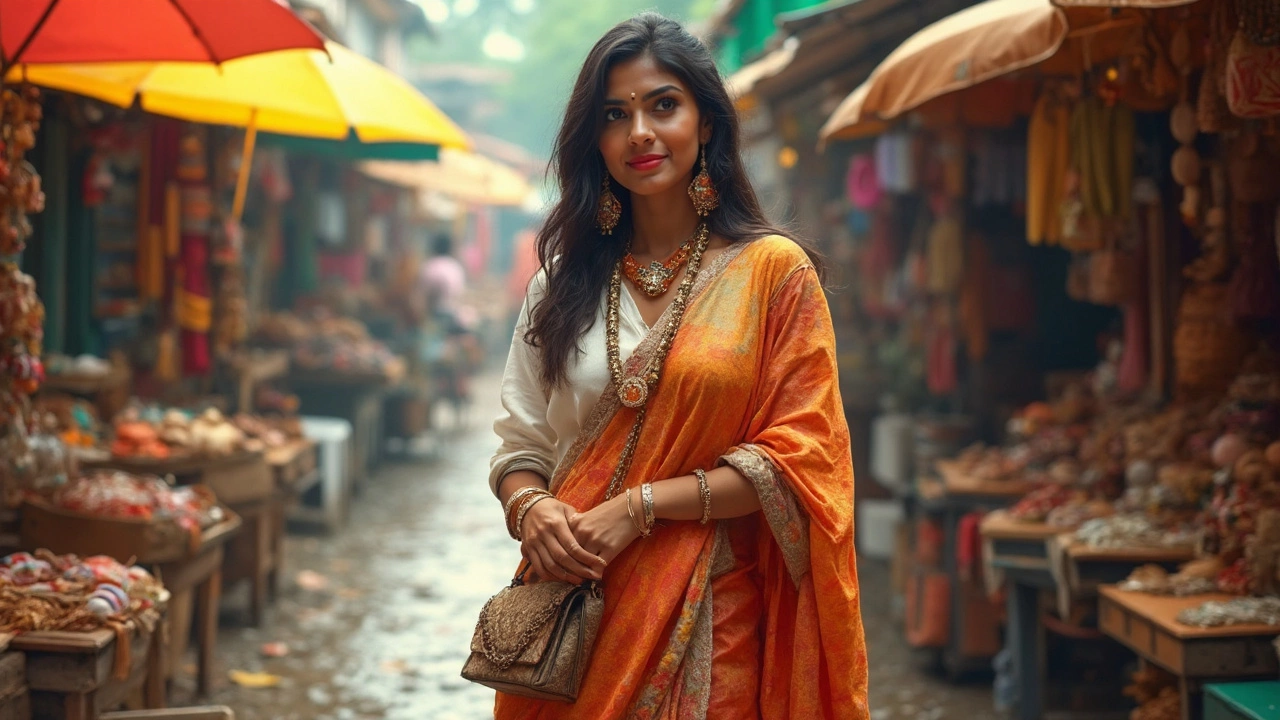
Indian Climate and Fabric Choices
Let’s be real—dressing well in India is mostly about surviving sweat, dust, and sudden downpours without looking like you lost a bet. The country’s climate is brutal on clothes and skin, so picking the right fabric is not just a style choice, it’s survival.
Most Indian cities go from scorching hot to muggy in a day and then, thanks to the monsoon, you might get drenched for weeks. Cotton is your best friend. Cotton kurtas, shirts, and even blend tees breathe easy and don’t trap heat. Linen works even better in dry cities like Delhi or Jaipur, but heads up, it wrinkles easily—just own that chilled-out look. Stay away from full-sleeve polyester or tight synthetics unless you want to feel like you’re in a portable sauna.
Silk and wool are classic at weddings and winter parties, but you’ll probably only wear them a few times a year. Silk blends are lighter and less clingy, so if you’re going to a big event, go for those. Watch out for transparent fabrics with light colors—that’s a rookie mistake during the Indian summer. Nobody wants their sweat patches on display.
- Stick with light, earthy or pastel colors—they reflect sunlight and don’t attract as much dust and sweat stains.
- Try khadi if you want traditional vibes and airflow. It’s handspun, easy to maintain, and always cool on the skin.
- Denim jeans aren’t the best for Indian summers, but slim cotton trousers or chinos look sharp and breathe better.
- If you live in coastal places like Mumbai or Chennai, moisture-wicking underwear is a game changer. Trust me.
Here’s a quick look at how different fabrics handle Indian weather:
| Fabric | Best For | Indian Season | Notes |
|---|---|---|---|
| Cotton | Everyday wear | Summer, Monsoon | Absorbs sweat, easy to wash |
| Linen | Business/formal casual | Summer, Dry climates | Wrinkles, but super breezy |
| Khadi | Casual, ethnic | All year | Feels cool, eco-friendly |
| Silk blends | Festive/Party | Winter, Big events | Looks rich, lighter than pure silk |
| Polyester blends | Sports, fast fashion | Not ideal | Dries fast, can feel stuffy |
One last thing: take care of your clothes. Indian weather can do real damage, especially during monsoons. Air dry in the shade, iron only when pretty dry, and try not to pile everything together or you’ll get the classic mildew smell. Smart fabric choices keep you looking fresh, and that’s half the battle won in fashion accessories India.
Common Style Mistakes to Dodge
Everyone talks about what to wear in India, but hardly anyone warns you about what not to do. The mix of tradition, fast fashion, and a crazy climate makes it easy to mess up. Sometimes, the difference between standing out and fitting in is just about avoiding rookie mistakes.
Let’s break down the biggest style slip-ups people make:
- Ignoring the Indian body type: Most international styles are designed for different body shapes. Deep V-neck tees or skinny jeans may look epic on a mannequin, but often don’t work for Indian builds. Find cuts that fit your shape—straight-cut trousers, not-too-baggy shirts, and mid-rise jeans are usually the sweet spot.
- Choosing the wrong fabrics for the weather: That polyester shirt or thick denim jacket won’t stand a chance against 40°C summers or unpredictable rains. Cotton, linen, and blends keep you breezy and sharp year-round.
- Over-accessorizing: Going heavy on chains, oversized sunglasses, or leather belts in every color screams trying too hard. Pick one standout accessory—maybe a cool watch or a pair of classic sunglasses.
- Blindly following Western trends: Trends can be fun, but don’t be the guy in ripped jeans at your cousin’s traditional engagement. Mix modern pieces with a bit of Indian touch, like pairing chinos with a Nehru jacket.
- Ignoring grooming: High-end brands can’t save you if you show up with untrimmed beards, messy hair, or sweat patches. A neat look always wins.
Quick fact: A 2023 fashion survey in India found that 62% of people said comfort was their top reason for rejecting a style, but 49% admitted copying trends that just didn’t work for them.
| Common Style Mistake | Why It’s a Problem | What to Do Instead |
|---|---|---|
| Wearing heavy layers in summer | Leads to sweating and discomfort | Go for light, breathable fabrics |
| Matching everything | Makes outfits look forced | Mix textures and colors naturally |
| Too many branded logos | Looks flashy and distracts | Stick to one visible logo max |
| Neglecting shoes | Ruins the whole look | Clean, well-kept shoes always |
If you pick only one thing, remember: fashion accessories India are about balance and timing, not piling on the trendiest items. The right move is always about keeping it simple, fresh, and you.
